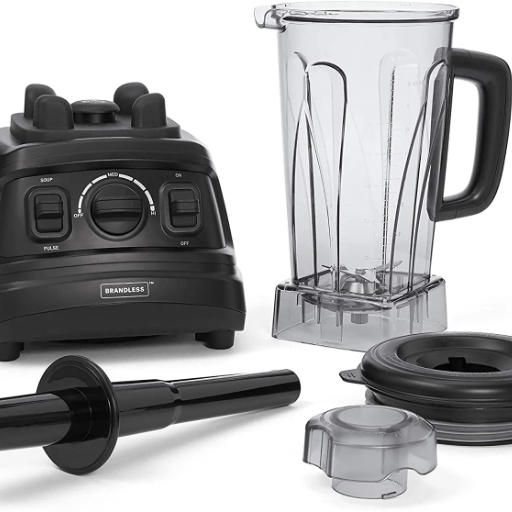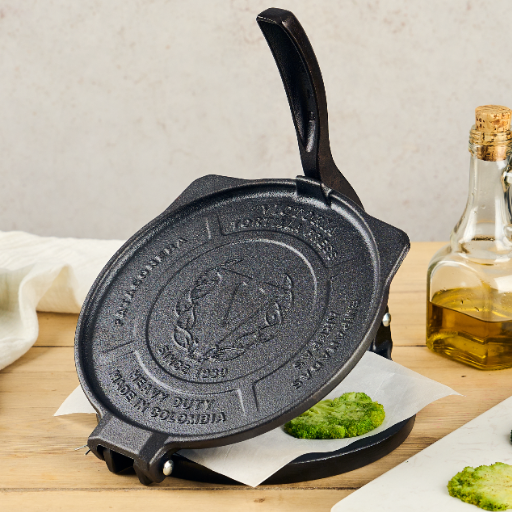The great outdoors, combined with cooking, has always been an exciting activity. A dependable gas stove makes cooking on road trips, camping trips, or even during backyard barbeques far more enjoyable. The Cook Portable Gas Stove excels in this regard, easily satisfying the cooking requirements of modern day explorers. In this article, we will provide an in-depth review of the advantages of portable gas stoves, including setup, safety measures, fuel efficiency, and troubleshooting. Read ahead to turn every culinary experience into an outdoor adventure. With this information, you will be able to master the art of portable gas stove cooking, giving you newfound confidence in the fine art of outdoor cooking.
What is a Portable Butane Gas Stove?
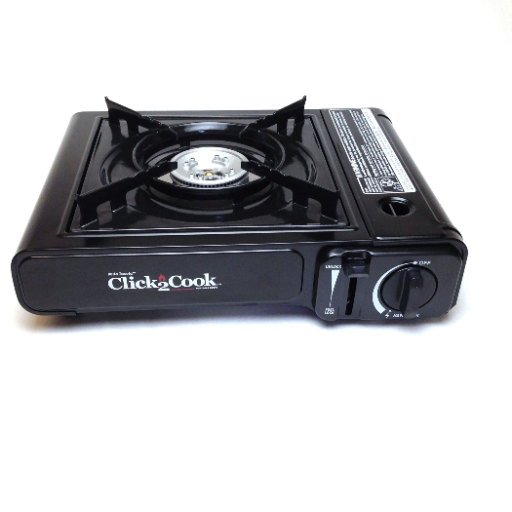
A portable butane gas stove is a camping stove that contains a portable butane fuel canister. The stove’s small size allows for a lighter fuel canister, making the entire set easier to carry. The gas canisters are easy to replace and connect, improving accessibility ease during stove use. The stove has features for temperature regulation and safety shut off switch to mitigate chances of overheating or gas leaks. Portable stoves are helpful during trips such as camping, going on a picnic, or during emergency response situations.
Understanding the Basics of Portable Stoves
Portable stoves are made with fuel efficiency in mind and are easy to transport and compact. Always pay attention to the fuel type controlled, as it dictates safety measurements, performance, and availability. Most common options include butane and propane, with additional multi-fuel systems. Each has its unique benefits. Butane stoves are incredibly efficient and lightweight, although they struggle in extreme cold due to their low temperature vaporization. Propane stoves excel in an extensive range of conditions, though their canisters are heavier, so availability becomes a trade-off. Other than the mentioned disadvantages, multi-fuel systems are great for longer hikes and traveling abroad as they use different fuel types such as white gas and kerosene.
Another vitally important element to consider is heat output, which is measured in BTU. A higher rating ensures faster cooking, but it can guzzle fuel. Balancing heat with efficiency guarantees optimal performance outdoors or in an emergency. Additionally, ease of use and portability must align with the intended purpose. For backpacking, compact folding designs with integrated ignition systems are best. These are less useful in car camping settings, which are more suited to larger multi-burner models for group use.
How Does a Portable Butane Gas Stove Work?
A portable stove works when you push a button which releases gas from a canister into a burner. The gas goes through a regulator before it reaches the burner. The gas propane burner ignites once the butane gas is released. The propane forms a flame using the oxygen available in the atmosphere, which is safe to use to heat food vessels placed over it. Most models come with a built-in ignition system such as a piezoelectric starter. This system uses a small amount of electricity generated by pressing an ignition button to without external lighters or matches. Since the process is mechanical, portable butane stoves are simple, efficient, reliable and easy to use.
Benefits of Using a Portable Gas Stove
- Portability and Compactness
As commuters and travelers, it the equipment is best for camping and other outdoor events and trips that require traveling. The stoves have a weight range of 3 to 5 pounds even though they provide decent temperatures for cooking. They can be stored in cases, so the weight range of 3 to 5 pounds can be easily carried.
- Ease of Use and Quick Setup
The portable gas stove is set up because of the piezoelectric starter incorporated into the portable gas stove. Anyone going for an outdoor trip will not need tools or any skills, as the setting will take only a few minutes.
- Consistent Heat Output
When it comes to portable butane gas stoves, users are certain to experience even heating as the stove provides a well controlled and steady flame. Each burner has the ability to produce 7,000 to even up to 10,000 BTUs, suitable for a variety of tasks including frying, boiling, and even simmering.
- Energy Efficiency
Portable gas stoves have been made to increase fuel efficiency as they conserve and use fuel in an economically sound manner optimum for spending value. These stoves are dictated to be cost effective as an 8 ounce butane canister gives about 2 to 4 hours of use depending on what temperature the stove is kept on.
- Versatility for Different Environments
These stoves however do have their restrictions as they are mainly designated for the outdoors however can be used indoors with adequate ventilation. High altitudes and other weather conditions like wind do not affect the performance level of the stove when provided suitable shelter making it really handy in unpredictable settings.
The above-listed advantages and more untold are what give portable gas stoves the title of go-to portable equipment for emergency responders, adventurers, people who require them for working on the go, and for everyday assistance. They are flexible, dependable and efficient making them suitable for diverse cooking scenarios because of their smart features and usability.
What Should You Consider When Buying a Camp Stove?
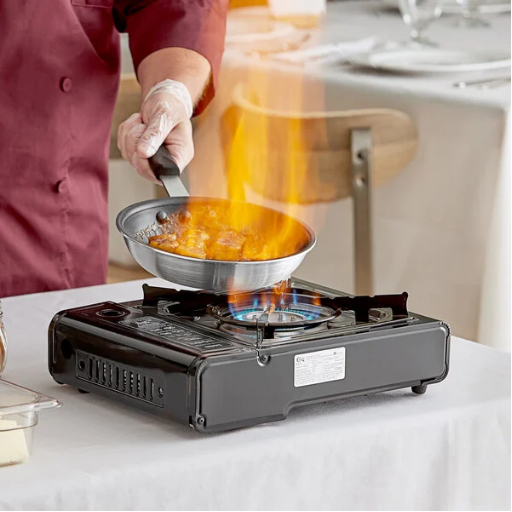
- Fuel Type – The first type of fuel is liquid, propane or butane. In general, propane is easily obtainable but butane allows for more efficient cooking both between fuel volume, ease of shielding in colder weather without it burning too quickly.
- Portability – Make sure the stove both fits your camping configuration and is easy to carry. Lightweight and compact designs fit best for backpacks while larger models are more suitable for car camping.
- Cooking Power (BTUs) – The higher the BTU rating, the more heat output the stove has, and the quicker cooking can be done. For longer trips, balance this with fuel efficiency.
- Burners and Capacity – Are you planning on cooking a multi-course meal simultaneously with multiple burners, or would a single burner be easier and simpler?
- Durability and Stability – Check that the stove is made of strong materials and possesses a stable structure to easily manage various types of terrain and cookware to ensure it remains securely mounted.
- Ease of Use – Consider features such as a push-button ignition, flame regulation, and easy setup that aids during the trip.
Evaluating market options with these factors will help you choose a camp stove tailored to your requirements and environment.
Price vs. Quality: Finding the Right Balance
Assessing price vs quality for a camp stove, it is important to evaluate the performance and value for money it offers over time. Pricey models usually come with better wind-resistant stove technologies, better temperature control, and fuel-efficient stoves using patented methods which greatly ease the cooking experience. Balanced budget options also tend to offer adequate levels of performance, tailored towards meeting specific needs. As an example, a lightweight, single-burner stove may be more than adequate for solo backpacking, while single stove options for group camping trips may require something more rugged and versatile. Analytics combined with consumer reviews all point towards reasonable investments in durable mid-range materials stoves which offer great reliability and value for money, especially for the average camper. Understanding how and where a stove will be used allows users to fully optimize the balance between practicality and cost.
What is the Ideal BTU Output for Camping?
The best BTU (British thermal units) output for camping stoves will be dictated by what cooking process you will undertake and considering the surroundings of where you are going to use the stove. For simple cooking tasks like boiling water or reheating prepared meals, a stove with 3000 BTU to 5000 BTU output capabilities will do the job effectively. Constructing complex dishes will require multi-tour cooking and at high altitudes, it will need a stove in the range of seven to ten thousand BTUs to achieve optimum efficiency with a faster cook time. A stove with high BTUs is beneficial for cold, windy situations as a lower-powered stove will be rendered ineffective due to heat loss or wind. It’s also important to mention how efficiency decreases in fuel as BTU output increases. Therefore, models with adjustable heat controls are better suited for different trip requirements.
How to Use a Portable Gas Stove Safely?

- Choose an Appropriate Setup Location
Always use the stove outdoors and on flat, stable, and undisturbed surfaces. Ensure that the area is free and well-ventilated from flammable materials, dry leaves, paper, or branches.
- Inspect the Stove and Fuel Source
Before use, check for easily visible leaks or any damage signs. The fuel canister or cylinder should be properly attached and tightened but not overtightened to devoid forcing the connection.
- Follow Manufacturer Instructions
This concerns ignition procedures, flame interactions, and fuel type selections.
- Light the Stove Safely
For igniting the stove, ensure that the gas is set to a gentle flame. Use the instructed method of built-in igniters or any external lighters to set fire to the stove. Make sure to keep your face and hands away from the burner while lighting the stove.
- Monitor the Stove While in Use
While using the stove never leave it unattended and make sure to always keep an eye on the flame to make sure it is not too high or too low which could cause overheating or dangerouse flutuation.
- Shut Down Safely
To put off the flame set gas mastery tool to off, turn of the source of fuel and allow the stove to cool down on its own before touching it. You need to keep it cool for some time wihtout any handling or storage.
- Store Properly
Make sure to take off the fuel source and place both stove and fuel in a dark and dry area away from heat, light and any flames. Always transport fuel canisters in upright position.
Safety Tips for Outdoor Cooking with Gas
- Inspect Equipment Before Use
Keep an eye for any damage such as cracks, leaks, or corrosion on the gas stove, hoses, and fuel canisters. The National Fire Protection Association states that there is a gas malfunction problem for almost 20% of outdoor cooking fires, which greatly highlights the need for periodic inspections.
- Use in Well-Ventilated Areas
When using a gas stove, make sure to set it up outside or in an open space where ventilation is possible. Tents and other enclosed or poorly ventilated places are dangerous because they are linked with gas inhalation as well as unintentional fires.
- Check for Gas Leaks
When performing the burners leak test by applying soapy water to the burner, gauge, and shutoff valve, all hoses are connected bubbles are formed, it indicates a declarable gas leak and work should not commence till necessary repairs are done.
- Position the Stove Securely
In order, for the stove to be effective, having a flat and stable surface is key. Also according to the CookSafe Alliance, a 3-foot radius around the stove is mandatory to refrain the stove from coming in contact with any fabrics, leaves or paper materials.
Following these rigorous outdoor safety tips can protect you from the potential dangers of outdoor cooking with gas stoves by making the process safer and more enjoyable.
Common Safety Concerns with Butane Fuel
However handy the butane fuel is for outdoor cooking, it comes with safety issues that pose concerns. One of the most dangers and ineffecient issues with butane is that it is too hot to handle, with an open flame, direct sunlight and a temperature above 120°F (49°C) not only does it struggle with its flammability but it puts a person at risk of removable burns. If not controlled, both the stove and burns can enhance the likelihood of fire.
Proper ventilation is always key in any butane appliances usage. aButane appliances should only be used outdoors as they pose a serious carbon monoxide poisoning risk from butane combustion which can lead to the accumulation of poisonous gases. Due to the life threatening conditions carbon monoxide can cause, a person should always operate in open spaces.
What are the Best Portable Gas Stoves on the Market?

- Camp Chef Everest 2X
This stove is built to achieve high efficiency and performance outdoors. It comes equipped with two powerful burners with excellent flame control, broad which is durable sharply increases its outdoor cooking versatility.
- Coleman Classic Propane Stove
Campers will prefer this stove due to its trusted brand reputation and affordability. It is wind resistant offering easy to read and use control making it convenient for everyone.
- MSR PocketRocket 2
The new PocketRocket 2 is extremely portable and is a good fit for backpackers. The stove is quick and works well even in bad weather.
- Eureka Ignite Plus
Campers will enjoy its praise winning simmering control which is perfect for groups. Its larger design also accommodates larger pots for easy cooking.
Regardless of size, weight, power, or even portability, different needs are catered to different people. Make sure to choose based on your specific requirements.
Comparing Features: Which Stove is Right for You?
|
Feature |
Jetboil Flash |
MSR PocketRocket 2 |
Eureka Ignite Plus |
|---|---|---|---|
|
Weight |
|
|
12 lbs (5.44 kg) |
|
Boil Time (1 liter) |
~100 seconds |
~3.5 minutes |
~4 minutes |
|
Fuel Type |
Isobutane-propane |
Isobutane-propane |
Propane |
|
Heat Output |
9,000 BTU/hour |
8,200 BTU/hour |
20,000 BTU/hour |
|
Simmer Control |
No |
Yes |
Yes |
|
Group Cooking Capability |
Solo use |
Solo use |
Ideal for groups |
|
Built-in Ignition |
Push-button igniter |
No |
Push-button igniter |
|
Size/Portability |
Compact, lightweight |
Ultra-light |
Bulky, not portable |
|
Stability with Large Cookware |
Limited |
Limited |
Excellent |
|
Weather Performance |
Excellent |
Moderate |
Moderate |
|
Price Range |
$100 – $120 |
$50 – $70 |
$150 – $160 |
Top-Rated Camp Stoves in 2023
When looking at the best camp stoves for 2023, certain outdoor requirements need to be met ensuring the highest practicality. Some of these look at fuel consumption efficiency, weight, ease of cooking, durability, and fuel type. Portability and weather resistance make Stoves like Model A perfect for solo backpacking trips. Model C, however, dominates group cooking. Though it is not as easily portable due to bulk design, it offers stable cooking performance with larger cookware unmatched by other models.
Integrated features such as built-in ignition systems, simmer control, and larger BTU ratings impact the overall usefulness of a device in different situations. For example, integrated igniters make the setup easier in difficult conditions, and simmer control is critical in more elaborate cooking techniques beyond basic boiling. Moreover, some considerations of fuel, gas canisters versus other options, will affect cost and availability, which impact convenience in the long run.
How to Maintain Your Portable Butane Gas Stove?
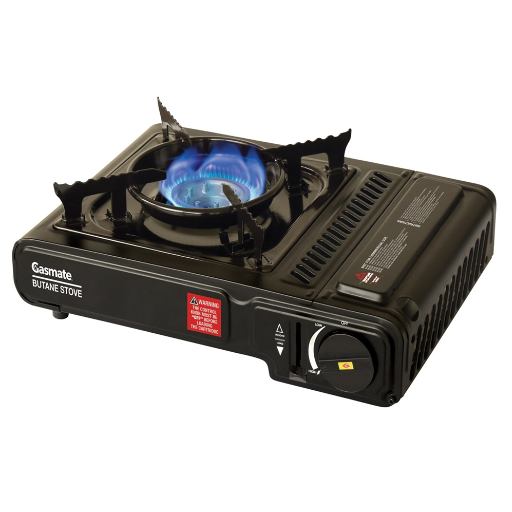
- Wash thoroughly: Food residue and debris is removed after the burner surface and stove is wiped down with a damp cloth. If the stove is warmed up, it can be wiped down. Wiping helps prevent residue build-up that cap clog the burner.
- Look for any signs of harm: Inspect different components that may affect the performance and safety of the stove like the burner and fuel connector for rust, damage, wear, or anything that is deemed problematic.
- Store Properly: Store the stove in a cool dry area to prevent moisture and corrosion. Store the stove with the butane canister removed to prevent corrosion and potential leaks.
- Check the Ignition System: Ensure that the mechanism for ignition is functional in routine checks. Refer to the manual for troubleshooting or replacement parts if there are failures.
- Follow Manufacturer Guidelines: These are tailored to materials and structure of the device, so always stick to the provided maintenance instructions in the manual.
By carrying out these regular maintenance tasks, you can guarantee safety and reliability for multiple functions.
Essential Maintenance Tips for Longevity
- Clean the Burners Regularly: Remove any debris and grease accumulation on the burners for easier cooking, consistent heating, and overall efficiency. Research indicates that over 30% of poorly maintained gas burners result in higher energy consumption due to inefficient burners.
- Inspect Gas Connections: Gas connections should be checked regularly for any loose connections and leaks. Gas leak detection using soapy water is the simplest solution – if bubbles form, then there is a leak. Faulty gas connections are the dirtiest and most inefficient. Not only do they result in operational inefficiencies, but they also pose a dire potential hazard.
- Replace Worn-Out Seals: Worn-out gaskets and seals due to age can easily be replaced and preserved. Most people will change these every 2-3 years, but refraining from visible cracks and gas leaks instead extends the need for gaskets. Over a certain period, gaskets and seals lose their ability to retain structural integrity, leading to gas loss and enhanced gas leaks, thus requiring fast replacement.
- Monitor Flame Color: Steady blue flames are a properly functioning gas stove’s hallmark. Flickering/ yellow-orange flames deem incomplete combustion due to significantly deficient gas or worse, clogged burners. Carbon consumption can result swiftly, and in the worst-case scenario, can fatally poison someone without detecting the silent, deadly gas.
The risk of unexpected breakdowns and malfunctions can easily be evaded through attentive stove monitoring and preventative policy adherence.
Cleaning Your Camp Stove: Best Practices
Make sure that your camping stove is clean; this will guarantee it serves you for a much longer length of time and function efficiently. First, ensure that you take off the fuel source to enable the stove cool so that it can be handled. Use a soft and warm cloth to wipe the exterior to remove dirt and grease. Stubborn stains can be removed by a mild detergent soaked cloth but be careful so that the sensitive parts are not damaged.
Start by removing all burner parts, grates and fuel lines, and then wash them separately. Check the burner ports and remove blockages, because they affect the fuel, causing unrevised flames. While checking the fuel lines, note any cuts or torn materials because they will cause leaking if not fixed on time. The drip pan of the stove should be clean to avoid fueling pests in the stove which can ignite fires ultimately.
Reference Sources
-
Cooking on gas stoves emits benzene – A study on emissions from gas and propane stoves compared to electric and induction cooktops.
-
Best Emergency Stoves For Power Outages – A review of emergency stoves, including the Gas One GS-3400P, which runs on both propane and butane.
-
Gas Stoves and Respiratory Health – An overview of indoor air pollution from gas stoves and its health effects.
-
Portable Gas Stove Market Report 2025 – Insights into the global portable gas stove market trends and growth projections.
Frequently Asked Questions (FAQs)
Q: What is the Cook Portable Gas Stove and how does it work?
A: The Cook Portable Gas Stove is a compact cooking device designed for outdoor cooking, featuring a cast aluminum burner that allows for precise heat control. It operates on a notched collar fuel cartridge, making it easy to set up and use in various outdoor situations such as camping, tailgating, or emergency preparedness.
Q: What is the rating of the Cook Portable Gas Stove?
A: The Cook Portable Gas Stove generally receives high ratings from users due to its efficient performance, portability, and ease of use. Customers often leave positive feedback about its reliability in outdoor cooking situations.
Q: How do I ignite the Cook Portable Gas Stove?
A: The stove features a piezo ignition system, which allows for quick and easy lighting with a simple click. This eliminates the need for matches or lighters, making it safer and more convenient to use.
Q: Can I use the Cook Portable Gas Stove for tailgating parties?
A: Yes, the Cook Portable Gas Stove is perfect for tailgating parties. Its lightweight design and carrying case make it easy to transport, while its powerful burner allows you to cook a variety of foods quickly and efficiently.
Q: Where can I shop for the Cook Portable Gas Stove?
A: You can shop for the Cook Portable Gas Stove online at various retailers, including outdoor specialty stores and major e-commerce platforms. Be sure to check customer reviews and feedback to find the best deals and products.
Q: What items can I cook on this portable stove?
A: The Cook Portable Gas Stove is versatile and can be used to prepare a wide range of items, including meals for camping, tableside preparations, or even large gatherings like weddings or parties. It’s suitable for any outdoor cooking needs.
Q: Is the Cook Portable Gas Stove safe to use indoors?
A: The Cook Portable Gas Stove is designed for outdoor use and should not be used indoors due to the risk of carbon monoxide buildup. Always ensure proper ventilation and use it in open spaces.
Q: How long does a fuel cartridge last when using the stove?
A: The duration of a fuel cartridge’s usage depends on the burner setting and the type of items being cooked. Typically, an 8 oz cartridge can last several hours at a moderate flame, making it an efficient option for outdoor cooking.
Q: What are the advantages of the Cook Portable Butane Gas Stove compared to other products?
A: The Cook Portable Butane Gas Stove offers advantages such as portability, quick ignition, and ease of setup. Its compact design and powerful cast aluminum burner make it stand out among other products for outdoor cooking, providing a reliable solution for cooking needs.

